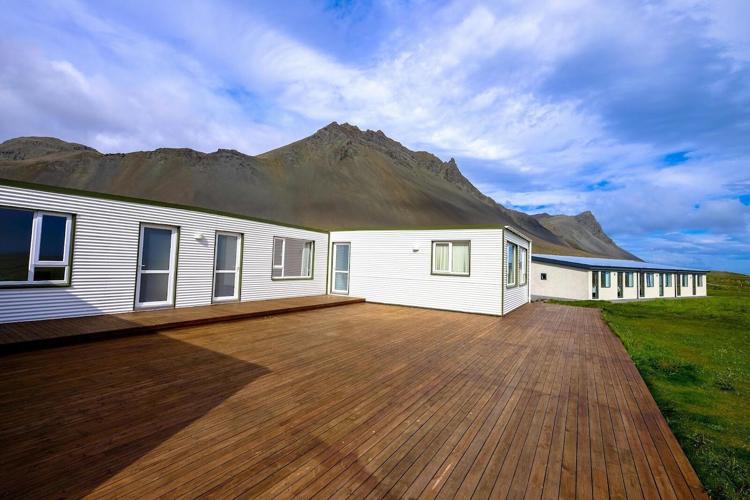Building a deck is one of the most rewarding home improvement projects. It expands your usable outdoor space, adds aesthetic appeal, and potential resale value to your property. But before you can enjoy your new backyard retreat, you’ll need to make one of the most critical decisions: choosing the right deck materials.
There are more options today than ever before, and each comes with its own advantages, maintenance needs, and price points. Your deck should reflect how you plan to use the space, how much time you’re willing to spend maintaining it, and what kind of environmental impact you want to make. Whether you prioritize cost, durability, appearance, or sustainability, understanding your material options is the first step toward making the right choice.

Composite and Plastic Decking
Synthetic decking has gained popularity for good reason, it offers the warm look of wood without the ongoing upkeep. Composite boards, typically made from a mix of wood fibers and recycled plastics, resist fading, splintering, and rot. They don’t need staining or sealing, and they stand up well against moisture and UV exposure.
Pure plastic decking, often made from PVC or polyethylene, offers similar benefits with even less maintenance. It’s especially popular in coastal or humid regions where moisture is a persistent concern. For homeowners seeking hassle-free longevity, a long-life plastic deck solution can provide decades of performance without cracking, warping, or requiring seasonal treatments. Both composite and plastic options are available in a variety of colors, textures, and finishes. Many manufacturers now offer capped boards with protective layers that enhance resistance to stains and scratches. While the upfront cost is higher than pressure-treated wood, the long-term savings on maintenance make these materials a cost-effective investment for many.
Pressure-Treated Lumber
Pressure-treated wood is the most common decking material in North America. It’s made by infusing softwood, usually pine, with preservatives that help it resist insects and decay. The major appeal is affordability. For homeowners working within a tighter budget, pressure-treated lumber offers a way to build a sizable deck without the premium cost.
It does come with trade-offs. This type of wood requires regular maintenance, including sealing, staining, and periodic repairs to prevent splintering and warping. Exposure to the elements can cause even well-maintained decks to degrade, which means a shorter lifespan than synthetic options.
While newer formulas have reduced the environmental concerns of older pressure-treating methods, these decks are still not considered eco-friendly. If cost is your top concern and you’re comfortable with routine upkeep, pressure-treated wood remains a viable choice, especially for smaller or lower-use decks.
Cedar and Redwood
For those who value natural aesthetics, cedar and redwood offer a rich, warm appearance that’s hard to beat. These softwoods contain natural oils and tannins that help resist rot and insects, making them better suited to outdoor environments than untreated pine or spruce.
Cedar, in particular, is prized for its pleasant aroma and distinctive grain patterns. It weathers to a soft silver-gray unless sealed regularly. Redwood, while less commonly available, provides a deeper reddish hue and slightly greater resistance to decay.
Despite their visual appeal, both materials require consistent maintenance to preserve color and integrity. Regular sealing and cleaning are crucial. Availability and cost can vary by region, and sustainably sourced lumber may be more expensive. Still, for homeowners who appreciate wood’s natural character and are willing to maintain it, these options strike a balance between beauty and performance.
Tropical Hardwoods
Tropical hardwoods like ipe, mahogany, and tigerwood are among the most durable natural decking materials available. Their density makes them resistant to moisture, insects, and fire, and they can last up to 40 years with proper care. These woods are exceptionally hard and heavy, which means they require pre-drilling and specialized tools during installation.
The appearance of tropical hardwoods is rich and exotic, with deep, luxurious tones and distinctive grains. Maintaining their color requires regular oiling; otherwise, they will naturally weather to a silver patina, similar to cedar.
Sustainability is a concern with some tropical hardwoods. It’s critical to choose certified, responsibly harvested wood to ensure your deck isn’t contributing to deforestation. While the material cost and installation labor are significantly higher, the result is a long-lasting, high-end deck that offers unmatched natural beauty and strength.
Aluminum Decking
Aluminum decking is an unconventional but highly effective option for homeowners seeking low maintenance and extreme durability. It’s lightweight, non-combustible, resistant to moisture and insects, and doesn’t crack or warp. It’s cool to the touch, even in direct sunlight, a feature many homeowners appreciate during hot summers.
Most aluminum systems feature interlocking boards that create a waterproof barrier beneath the deck surface, ideal for second-story decks where dry space below is desirable. Though the aesthetic leans more modern and industrial, powder-coated finishes offer a wider range of colors and textures than many expect.
Aluminum decking has a higher upfront cost than most materials, but its near-zero maintenance and long lifespan can offset that expense. It’s especially suitable for areas prone to extreme weather or for homeowners who want a durable, fire-resistant surface with minimal upkeep.
Choosing Based on Climate, Use, and Design
Climate plays a major role in determining which deck material will perform best. In humid or coastal regions, resistance to moisture, rot, and corrosion should be prioritized, making composite, plastic, or aluminum decking strong candidates. In dry climates, wood-based options may hold up better with less risk of decay, especially when treated regularly with a high-quality outdoor wood sealer to protect against sun and weather damage.
Consider how you’ll use the space as well. A poolside deck may benefit from slip-resistant surfaces, while a second-story deck might demand a waterproof system. The design of your deck matters; curved edges, multilevel platforms, or integrated seating may influence which materials are most practical.
The right material should align with your budget, lifestyle, maintenance preferences, and long-term goals. No one-size-fits-all solution exists, but understanding the strengths and limitations of each option can help you make an informed decision that adds comfort and value to your home.

Choosing the right decking material is about more than aesthetics; it’s about how you want to live, how much time you want to spend maintaining your investment, and how your deck will perform over the next 10 to 30 years. Whether you’re drawn to the warmth of natural wood, the ease of composite boards, or the cutting-edge performance of aluminum, your decision will shape how you enjoy your outdoor space for years to come. Taking the time to evaluate your options ensures that your deck becomes a durable, beautiful extension of your home.



(0) comments
We welcome your comments
Log In
Post a comment as Guest
Keep it Clean. Please avoid obscene, vulgar, lewd, racist or sexually-oriented language.
PLEASE TURN OFF YOUR CAPS LOCK.
Don't Threaten. Threats of harming another person will not be tolerated.
Be Truthful. Don't knowingly lie about anyone or anything.
Be Nice. No racism, sexism or any sort of -ism that is degrading to another person.
Be Proactive. Use the 'Report' link on each comment to let us know of abusive posts.
Share with Us. We'd love to hear eyewitness accounts, the history behind an article.